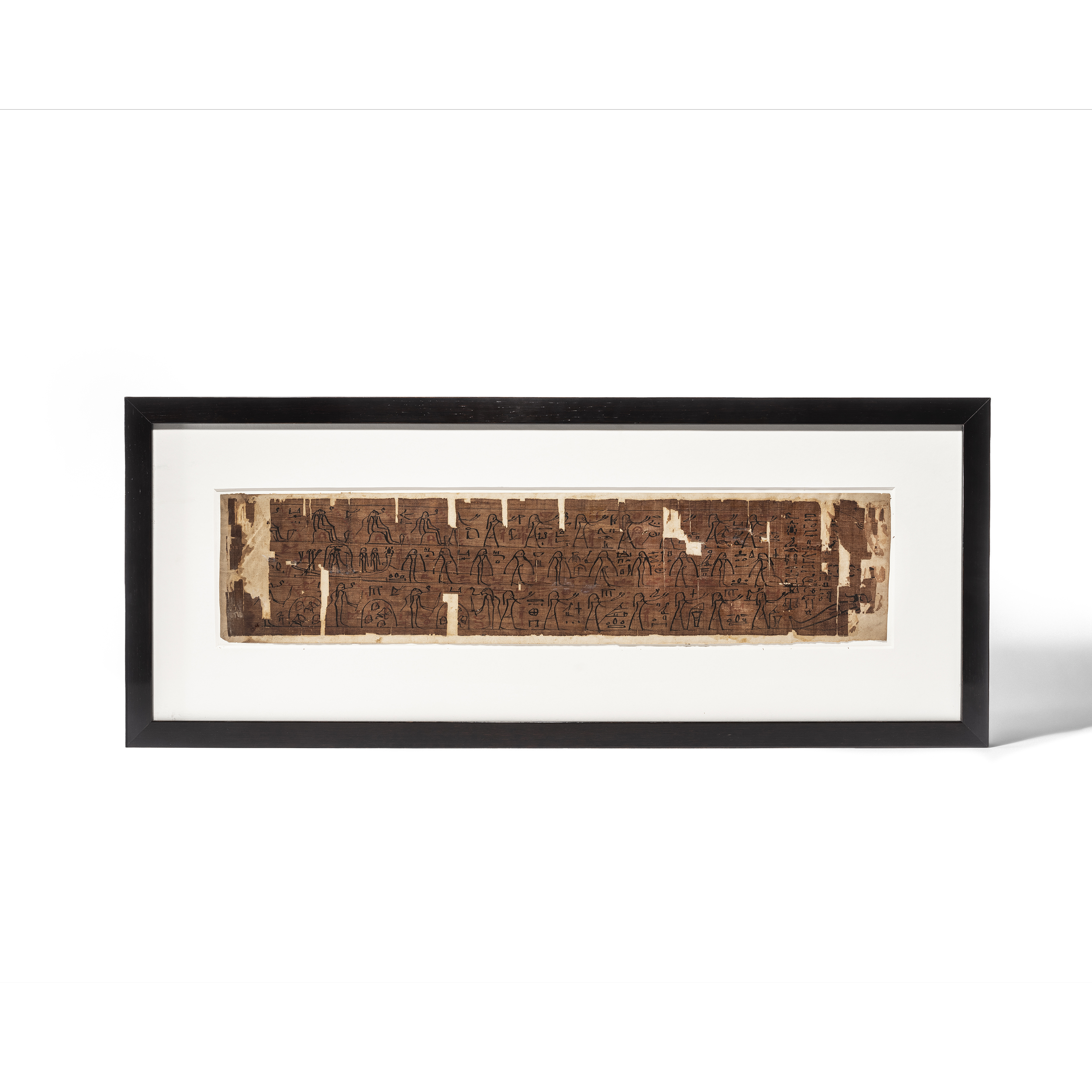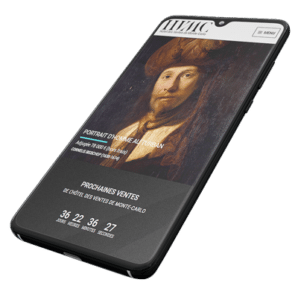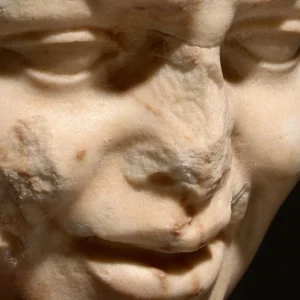Papyrus peint, pigments brun et rouge ; manques visibles
Dim. 12,5 x 60 cm
Egypte, XXIe dynastie, 1069-945 av. J.-C.
Provenance
Ancienne collection de Monsieur Kauffman, Antiquaire rue du Fg Saint Honoré, dans la seconde moitié du XIXe siècle
Littérature de référence
PIANKOFF, A., RAMBOVA, N., Mythological papyri translated with introduction by Alexander Piankoff, NY, Bollingen, 1957
Figurant une scène à trois registres. Au premier rang, des divinités assises, et des personnages en intercession.
Au deuxième rang, Khnum dans la barque lunaire tiré par des divinités.
Au dernier registre, des génies munis de couteaux découpant les corps qui ne passent pas l'Amdouat et suivis de personnages en intercession.
Dans le champ à droite, trois colonnes de texte hiéroglyphique en hiératique, au-dessous le sarcophage du défunt en Osiris.
On désigne communément par "papyrus mythologique" des manuscrits qui sont caractérisés par une très forte prédominance de l'image sur le texte et par leur mélange entre plusieurs compositions différentes. Ils sont assez spécifiques à la XXIe dynastie.
Cependant, le contenu se rapproche en général plus soit du Livre des Morts soit du Livre de l'Amdouat, comme c'est le cas ici.
Le papyrus était enroulé et disposé avec soin dans la tombe du défunt.
An Egyptian Third Intermediate Period, a mythological papyrus of Pen Maât, son of Nesmat, Dynasty 21th, 1069-945 B.C.
Representing a scene with three registers. In the front row, seated divinities, and characters in intercession.
In the second row, Khnum in the lunar boat drawn by divinities.
In the last register, geniuses armed with knives cutting up bodies that do not pass the Amdouat and followed by characters in intercession.
In the field on the right, three columns of hieroglyphic text in hieratic, below the sarcophagus of the deceased in Osiris.
The term "mythological papyrus" commonly designates manuscripts which are characterized by a very strong predominance of the image over the text and by their mixture between several different compositions. They are quite specific to the 21st Dynasty.
However, the content is generally closer to either the Book of the Dead or the Book of Amduat, as is the case here.
The papyrus was rolled up and placed carefully in the tomb of the deceased.
Description complète







